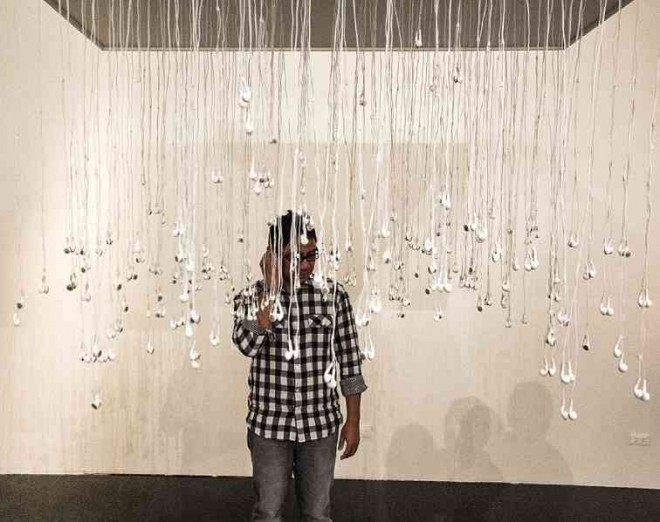
Art and international relations are celebrated in Media/Art Kitchen’s exhibit “Sensorium,” which commemorates the 40th year of Japanese-Asean friendship and coordination. It is ongoing at Ayala Museum.
Media/Art Kitchen is a collaboration project by curators and artists from the Philippines, Japan, Malaysia, Indonesia, Thailand, Singapore and Vietnam—each with different histories and traditions, and distinct political, economic and cultural situations.
The curators and artists developed the project questioning the nature of contemporary art, media art and technology, globalization, and localizations unique to participating countries.
Ayala Museum director Mariles Gustilo says “Sensorium” might test the viewer.
“For some, it might pose a challenge to comprehend simply because they (curators and artists) use new and disruptive forms to express their art; forms that interrupt our expectation of what art should be,” she says.
The exhibit is a collaboration of Japanese and Southeast Asian artists including Kenichi Hagihara; Takashi Makino; Mamoru, Yuichiro Tamura; Tetsuya Umeda; Lyota Yagi (Japan); Lifepatch; Anggun Priambodo (Indonesia); Fairuz Sulaiman (Malaysia); Ringo Bunoan; Kawayan De Guia; Tad Ermitaño; Liby Limoso; Manny Montelibano; Renan Ortiz; Maria Rosalie Zerrudo (Philippines); Chulayarnnon Siriphol (Thailand); and Bruce Quek (Singapore).
Nonconventional
Most of the artworks veer away from the traditional and instead capitalize on technology and interactive engagement with their audience.
Ortiz’s “Murmur” is composed of numerous earphones suspended in low ceiling. Users will be able to hear a recitation of the Alex Martin Remollino’s poem “Hindi Iyan ang Aming Hinahanap” on repeat, with each cycle read by a different speaker. The poem tackles the desaparecidos, political activists who have disappeared, apparently kidnapped or executed by agents of the state.
Ortiz says he uses earphones instead of a speakerphone so that listeners can “experience the voices more privately and reflect on the issues intimately.”
“Sungay” by De Guia is a giant horn made of recycled 35 mm celluloid films of old kitschy movies in the ’90s. The construction of the horn was inspired by the torotot (party blowing horns), common during the holidays.
The artist says the enormous horn reflects the impact of mass media and television, a “portrayal of desires and obsessions that could dominate one’s psyche through pictures and sound.” De Guia likens the sound made by the giant horn to the provocative and irritating sounds that brainwash society.
Japanese artist Lyota’s “Sound Sphere” consists of giant balls of rolled cassette tapes that produce various distorted sounds depending on their size. The balls are played on a customized cassette player, with the balls rotating while the sound is being played.
Viewers are encouraged to listen to the sound made by the balls while looking at their rotation and examine the relations between the balls’ contour, speed and the sound that they produce.
Another Lyota work, “Foci (Sieve of Stars),” is made of 240 slides with passages from the book “The Little Prince,” but with all the letters and punctuations removed except for the commas, periods and dots from letters I and J.
To be able to effectively see the dots, the user has to move forward or backward until the images are clear. The slides, when placed against a projector, form its own constellation.
Montelibano’s “Biya” (Hiligaynon term for a fighting cock that receives a lesser bet than its opponent) is an installation art comprising perforated fowl-carrier boxes, while the sound of cockfighting can be heard.
Montelibano says the artwork asks whether turning a patriarchal sport into an installation art makes it grand or more intimate.
Gustilo says the multimedia installations are both experimental and exciting. “They are perfect examples of what contemporary art is.”
She adds: “I have been advised that if I just accept the interruption and the feeling of displacement that may come with it, there in resides the art. Sounds like fun to me. Who knows what conversations it will stir up?”